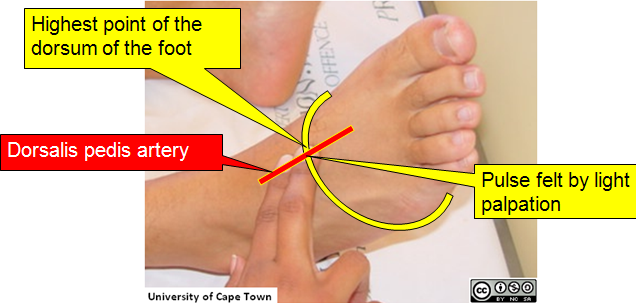Pedal edema refers to the abnormal accumulation of fluid in the feet and ankles, leading to noticeable swelling. This condition can affect individuals of all ages but is more commonly observed in older adults. While it may seem like a minor issue, persistent or severe swelling can indicate underlying health problems that require attention. Understanding the causes, symptoms, and treatment options for this condition is essential for maintaining overall well-being.

What Is Swelling in the Feet and Ankles?
Swelling in the feet and ankles occurs when excess fluid builds up in the tissues of these areas. The body naturally regulates fluid levels, but certain factors can disrupt this balance, leading to fluid retention. This type of swelling can range from mild to severe and may affect one or both sides of the body. In some cases, it is temporary and resolves on its own, while in others, it may persist and signal an underlying medical issue.
Common Characteristics of Swelling
- The skin over the swollen area may appear stretched or shiny.
- Pressing on the swollen area with a finger may leave a temporary indentation, known as pitting.
- Swelling may worsen after prolonged periods of standing or sitting.
- It can cause discomfort, heaviness, or pain in the affected areas.
Causes of Swelling in the Feet and Ankles
There are numerous potential causes of swelling in the feet and ankles. These can be broadly categorized into lifestyle factors, medical conditions, and external influences.
Lifestyle Factors
Several everyday habits and activities can contribute to swelling in the lower extremities:
- Prolonged Standing or Sitting: Remaining in the same position for extended periods can hinder blood circulation, causing fluid to pool in the feet and ankles.
- Lack of Physical Activity: A sedentary lifestyle can impair the body’s ability to regulate fluid levels effectively.
- High Salt Intake: Consuming excessive amounts of salt can lead to water retention, contributing to swelling.
- Obesity: Excess weight places additional pressure on the veins in the legs, impeding proper blood flow.
Medical Conditions
Swelling in the feet and ankles can also be a symptom of various medical conditions, including:
- Heart Problems: Heart failure can result in poor circulation, leading to fluid buildup in the lower body.
- Kidney Disease: Impaired kidney function can cause the body to retain sodium and water, resulting in swelling.
- Liver Disease: Conditions such as cirrhosis can lead to low levels of albumin, a protein that helps maintain fluid balance.
- Venous Insufficiency: This condition occurs when the veins in the legs struggle to return blood to the heart, causing fluid to accumulate.
- Lymphedema: Damage or blockage in the lymphatic system can prevent proper drainage of fluid from the tissues.
- Infections: Bacterial or fungal infections in the feet or legs can cause localized swelling.
- Arthritis: Inflammatory joint conditions, such as rheumatoid arthritis, can lead to swelling in the affected areas.
External Influences
Certain external factors can also trigger swelling:
- Injury: Sprains, fractures, or other injuries to the feet or ankles can cause localized swelling.
- Medications: Some drugs, including those for high blood pressure, diabetes, and hormone therapy, may have side effects that include fluid retention.
- Pregnancy: Hormonal changes and increased pressure on the veins during pregnancy can lead to swelling in the lower extremities.
Symptoms Associated with Swelling
In addition to visible swelling, individuals experiencing this condition may notice other symptoms depending on the underlying cause:
- Pain or Discomfort: Swelling can cause aching or throbbing sensations in the feet and ankles.
- Stiffness: The affected areas may feel stiff or difficult to move.
- Redness or Warmth: These signs may indicate an infection or inflammation.
- Shortness of Breath: If swelling is related to heart or lung issues, breathing difficulties may accompany the swelling.
- Fatigue: Generalized tiredness can occur if the swelling is linked to systemic conditions like kidney or liver disease.
Treatment Options for Swelling in the Feet and Ankles
Treatment for swelling in the feet and ankles depends on identifying and addressing the root cause. However, several general strategies can help alleviate symptoms and improve comfort.
Lifestyle Modifications
Making changes to daily habits can significantly reduce swelling:
- Elevate the Legs: Raising the legs above heart level for 15-30 minutes several times a day can promote fluid drainage.
- Exercise Regularly: Engaging in low-impact activities like walking or swimming can enhance circulation and reduce fluid retention.
- Reduce Salt Intake: Limiting salty foods can help prevent water retention.
- Wear Compression Stockings: These garments apply gentle pressure to the legs, aiding in fluid movement and reducing swelling.
Medical Interventions
If lifestyle changes are insufficient, medical treatments may be necessary:
- Diuretics: Also known as water pills, these medications help the body eliminate excess fluid through urine.
- Physical Therapy: Specialized exercises and techniques can improve circulation and reduce swelling.
- Treatment of Underlying Conditions: Managing chronic diseases like heart failure, kidney disease, or venous insufficiency can alleviate associated swelling.
Home Remedies
Simple home remedies can provide relief for mild cases of swelling:
- Cold Compresses: Applying a cold pack to the swollen area can reduce inflammation and numb pain.
- Massage: Gently massaging the feet and ankles can stimulate blood flow and encourage fluid drainage.
- Herbal Teas: Certain teas, such as dandelion or parsley tea, are believed to have diuretic properties that may help reduce swelling.
When to Seek Medical Attention
While occasional swelling is often harmless, certain signs warrant prompt medical evaluation:
- Sudden or severe swelling without an obvious cause.
- Swelling accompanied by chest pain, shortness of breath, or confusion.
- Persistent swelling that does not improve with rest or elevation.
- Signs of infection, such as redness, warmth, or fever.
- Swelling that affects only one leg, which could indicate a blood clot.
Preventive Measures
Taking proactive steps can help minimize the risk of developing swelling in the feet and ankles:
- Maintain a healthy weight to reduce pressure on the veins.
- Avoid standing or sitting in one position for too long; take breaks to move around.
- Stay hydrated to support kidney function and prevent fluid retention.
- Monitor and manage chronic health conditions with the help of a healthcare provider.





